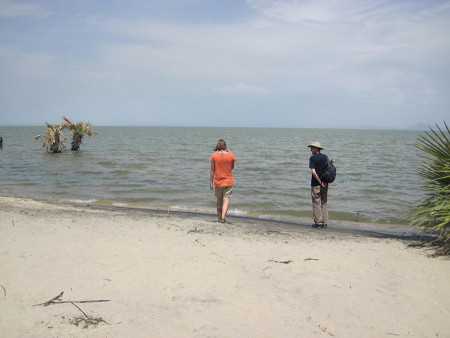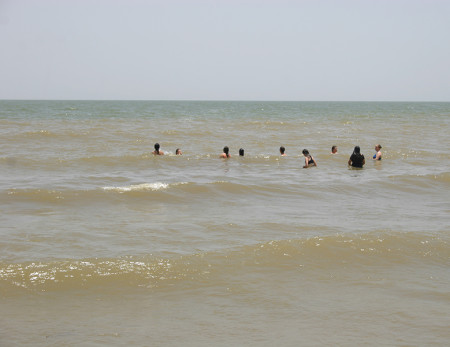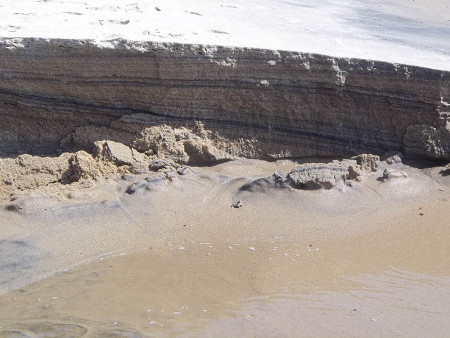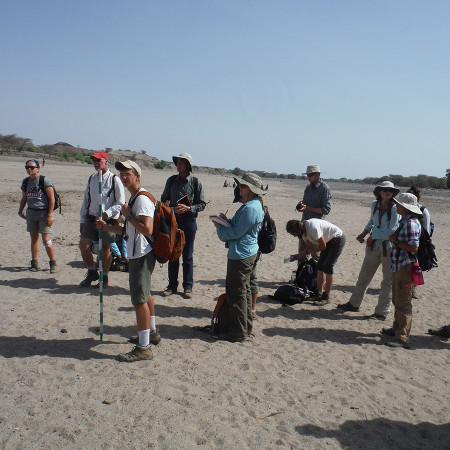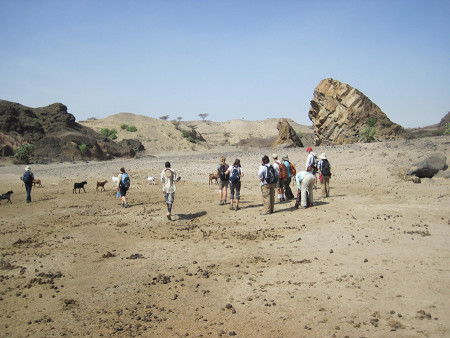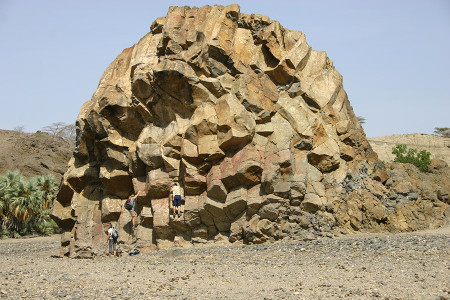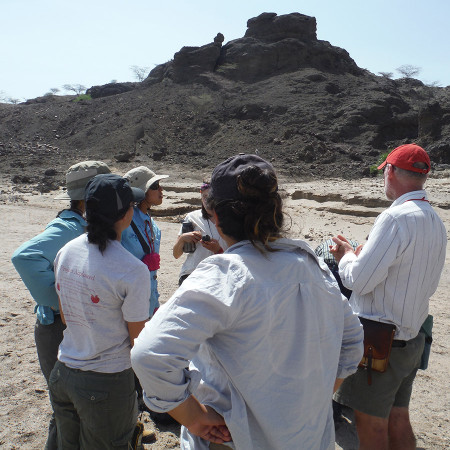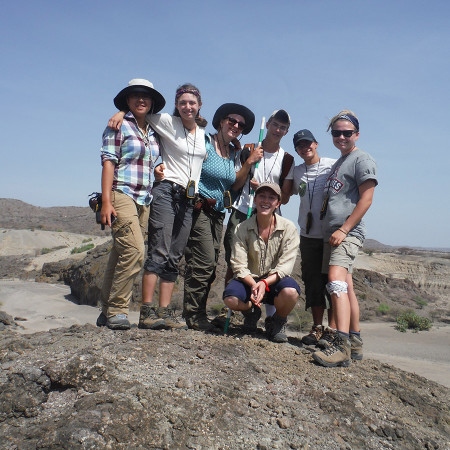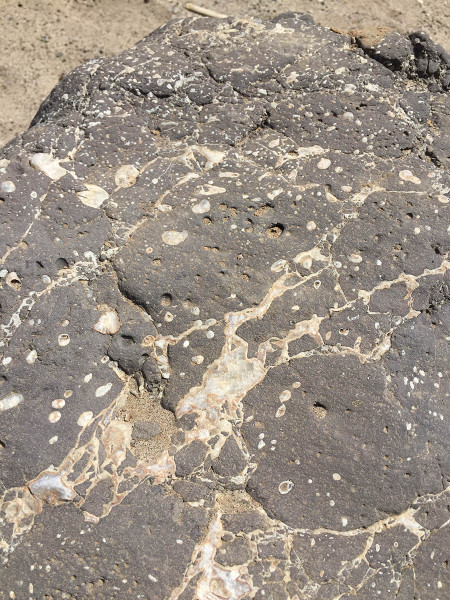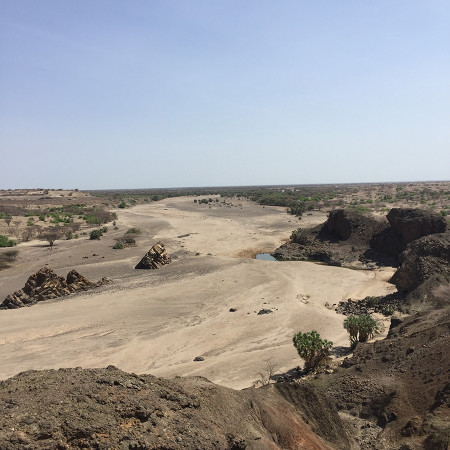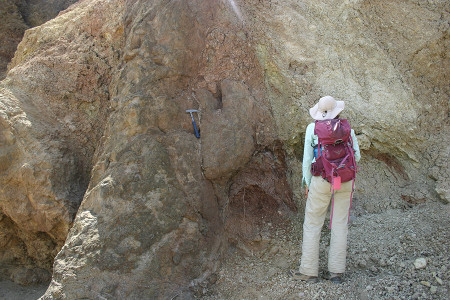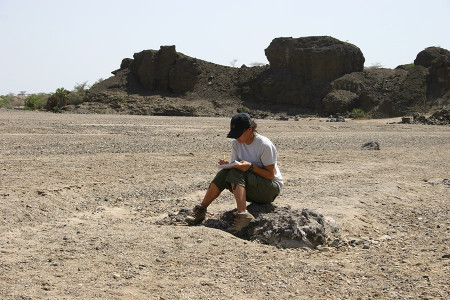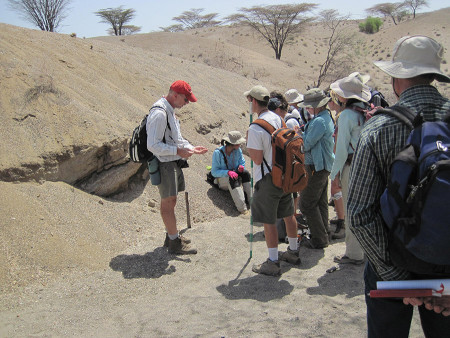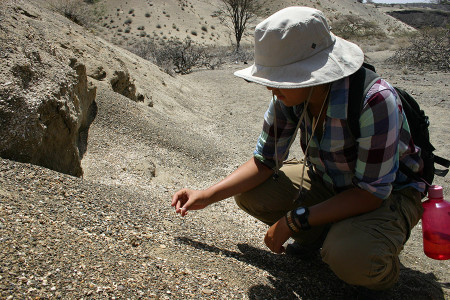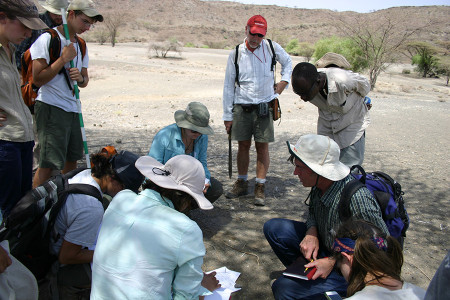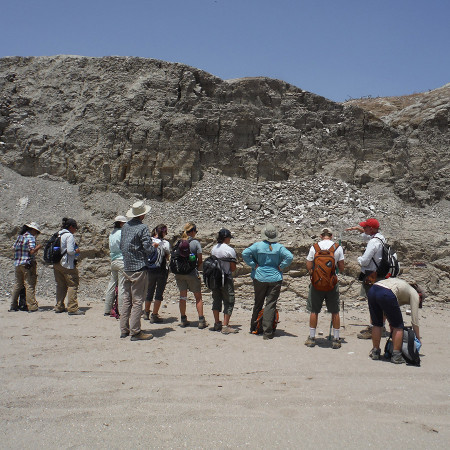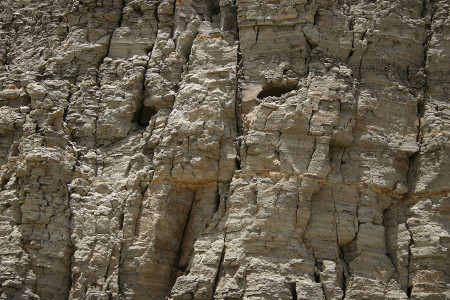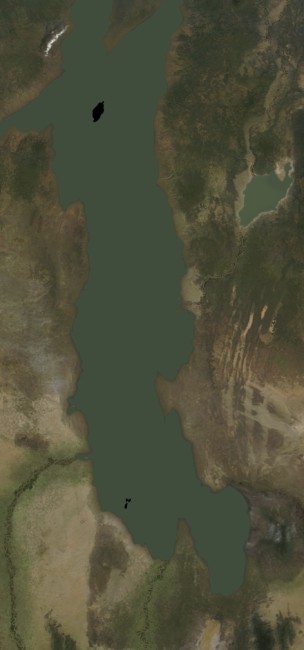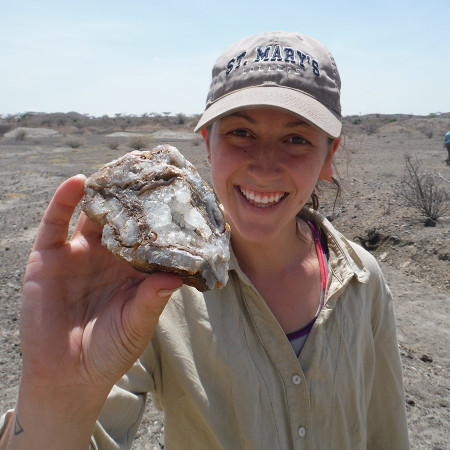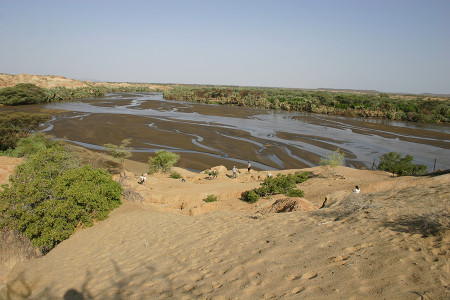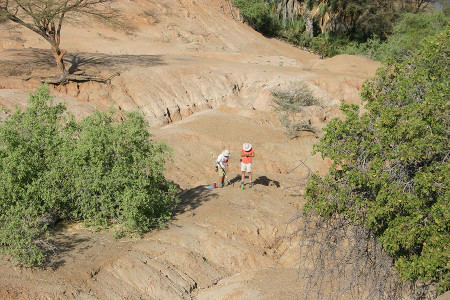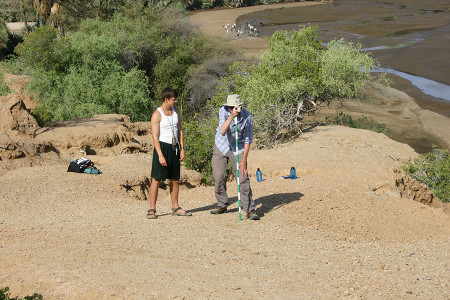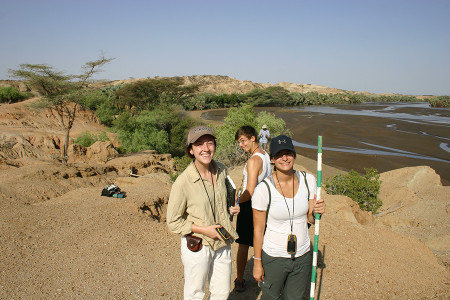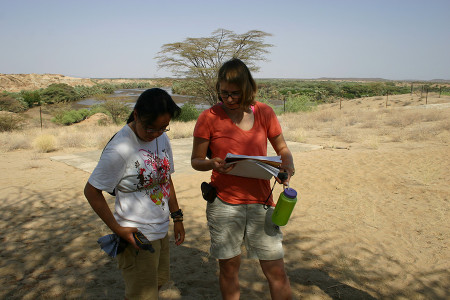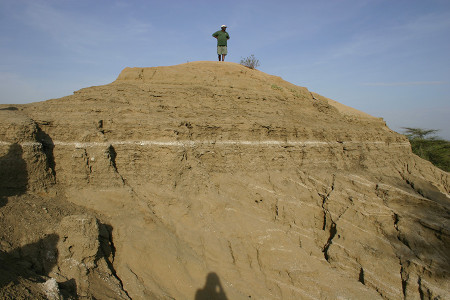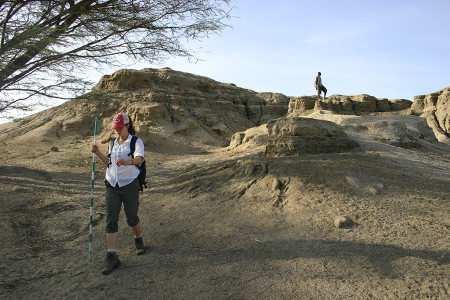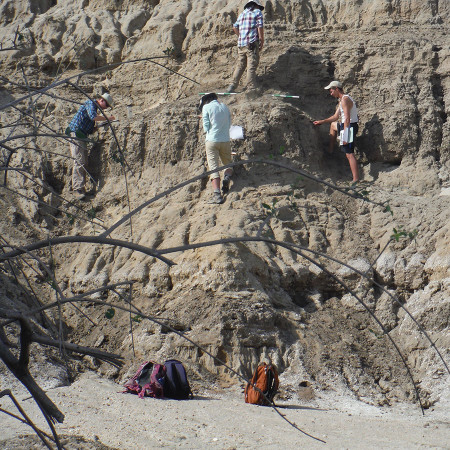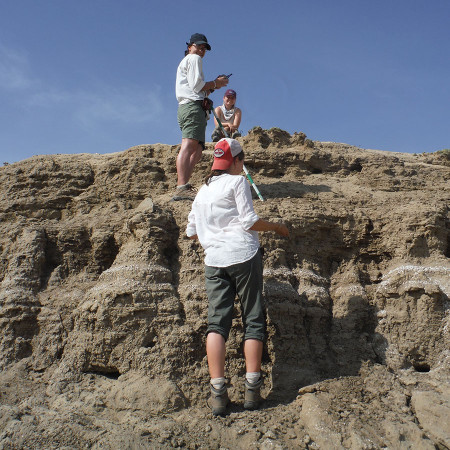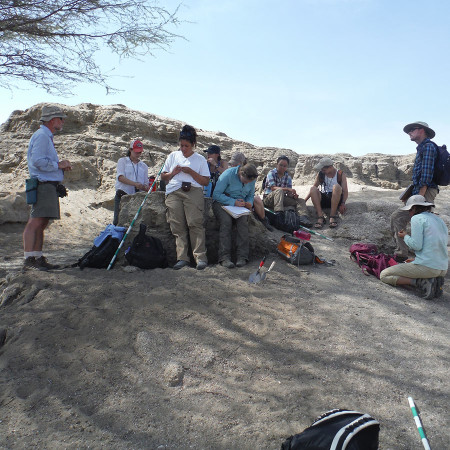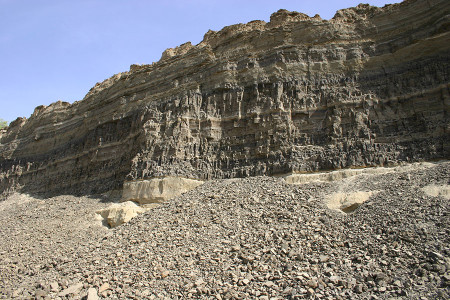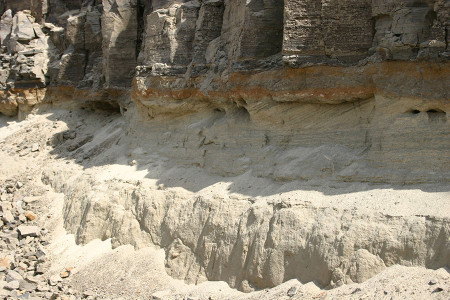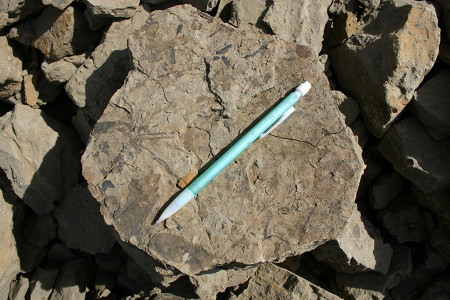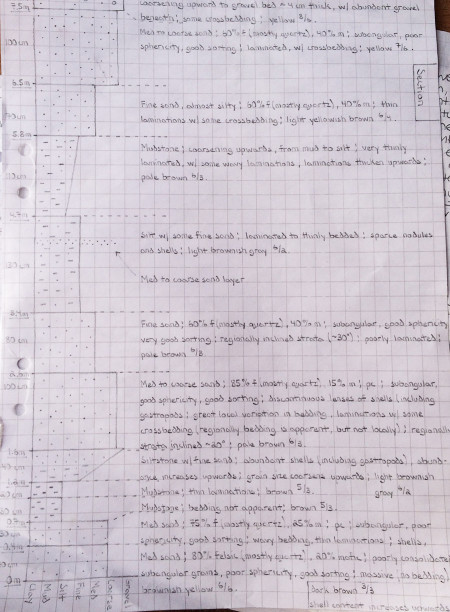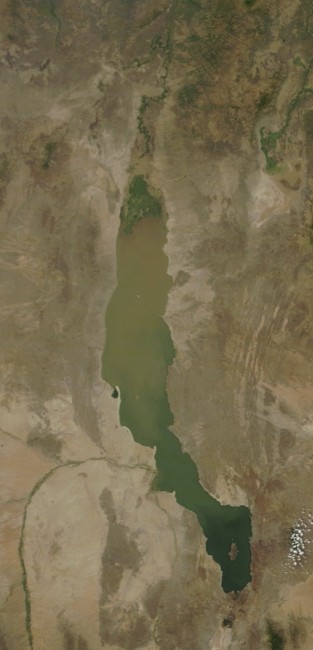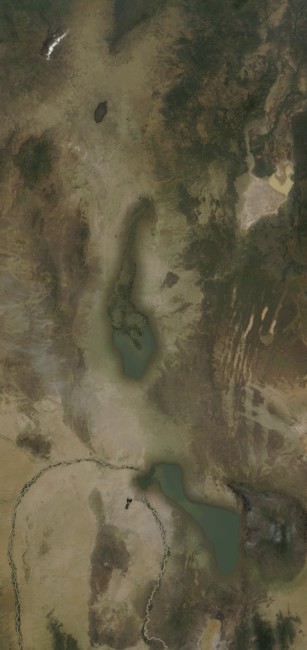When the Turkana Basin was not dominated by river systems, the rock record indicates several paleo-lakes occupied the region and sometimes reached over 100 kilometers away from the present lake margin. Instead of just recording the depositional environments that have occurred, a field geologist will try to determine the causes of such changes in order to reconstruct what the landscape looked like at different periods of time. Why did fluvial systems occupy the Turkana Basin for a greater period of time than lakes? How do lakes form? Where does it get its water? And other questions that will not be answered in this module – What type of life occurred in the Turkana Basin? Where? When? Why in that particular location?
To start, it’s important to know that the Turkana Basin is located within the East African Rift System (diagram below) and within a depression between the Ethiopian and Kenyan domes. As a result of tectonic processes and magmatic activity, Africa is slowly splitting apart in the eastern part of the continent and has created a rift valley. Some geologists believe this region may extend far enough to create a sea, such as the Red Sea, or possibly an ocean. For now, faults and volcanic dams along the rift valley have created a number of basins that is mostly occupied by lakes.
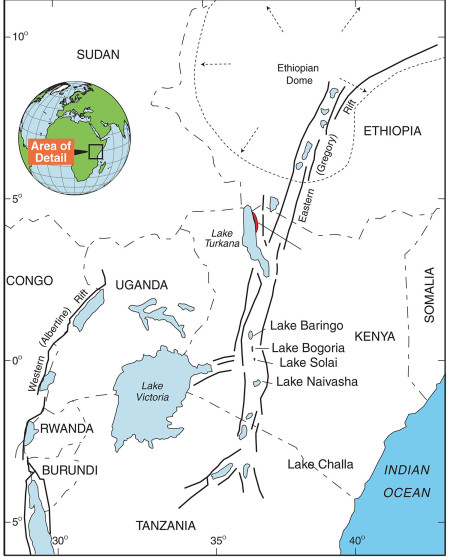
Lake Turkana is located with the eastern branch of the East African Rift System. Figure from Ashley et al., 2011
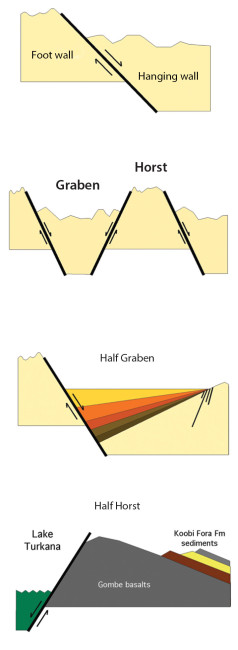
Normal Fault structures that are common in the Turkana Basin. Figure from Feibel 2011.
From the above diagram, you can now see how a typical graben and horst (basin and ridge) form however, what about the lake water? This is where the climate of the catchment basin comes in. The modern lake Turkana receives about 90% of its water from the Omo River that drains the lush and green Ethiopian Highlands and empties into the north end of the lake. More rain in the highlands and the rest of the Turkana Basin usually means higher lake levels. Sediment is also carried with the rivers and this means that all this “dirt” will accumulate in the basin over time and will eventually fill it. With no space for lake water, river systems occupied the Turkana Basin and moved through to reach the nearest base level, the Indian Ocean. This sequence repeats again with lake formation if enough space (faulting and basin formation) and water (local and/or climate changes) then, return to river systems when sediment has filled the lakes.
- Modern Lake Turkana shoreline
Within the present Lake Turkana, sedimentary deposits and their structures vary from the shoreline to further out in the lake. Some areas may be dominated with sand, mud, or a particular organic, chemical, and/or biological (e.g. oysters) material due to depositional patterns, water chemistry, and currents within the lake.
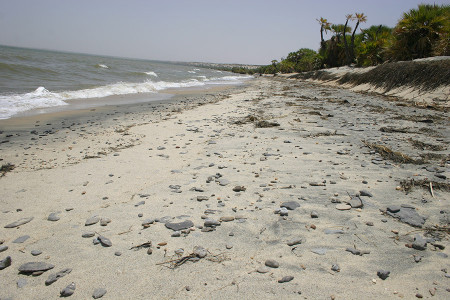
Lake Turkana shoreline north of Eliye Springs.
Older rock beds in this area (not shown) have weathered out and eventually formed Flat pebbles. Overtime they will also turn into sand.
Kabua Gorge, cut by the Kalakol River, was our first trip to examine paleo-lake deposits. This location exposes ~10,000 year old and younger lacustrine sedimentary beds resting on top of and adjacent to Miocene volcanics. The present water level of Lake Turkana is approximately 368 meters above sea level. During a humid period in the Turkana Basin (and most of northern Africa), lake levels in the basin reached up to 456 m asl, an overflow point into the Nile drainage basin. In the area of Kabua Gorge, the paleo-Kalokol River had cut down into the faulted volcanic deposits that make up the Lothidok Range. Much later, the area was inundated by lake highstands during the Holocene and deposited shell rich sands at the shore and siltstones in deeper water.
Here are some pictures from our trip to Kabua Gorge
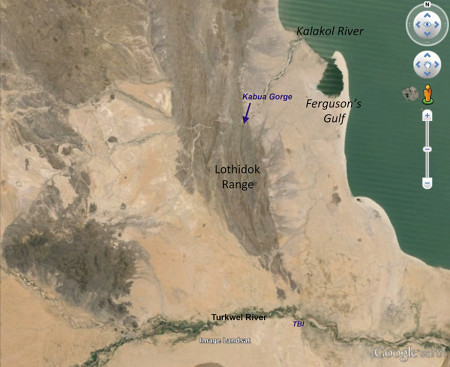
The Lothidok Range is made up of Late Oligocene to Middle Miocene volcanics and sedimentary deposits where a number of faults have shaped the relief across this area. Kabua Gorge formed within the range as a result of the Kalakol River eroding across in its path towards base level, presently Lake Turkana.
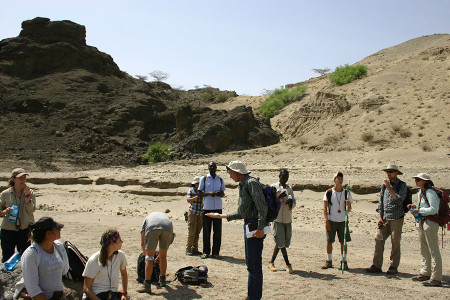
Professor Reynolds points out how the gravel in this river differ from what we’ve seen near the Turkwel River. Behind the group you can see <10,000 year old lake beds resting against ~25 million year old basalts. In addition, Professor Reynolds points out the major fault that is located at the eastern boundary of the Lothidok Range and extends to “Cellphone Hill” near TBI.
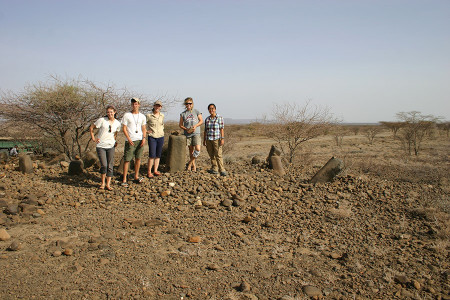
Middle Holocene stone pillar site within the Lothidok Range and approximately 10 kilometers south of Kabua Gorge….. more about this in the next module- Archaeology.
Stop 3- Pliocene Lake beds
Lake Lonyumum was the largest lake to occupy much of the Turkana Basin approximately 4.1 million years ago. The climate of the region was much different than today. Studies on paleosol (ancient soil) carbonates and fauna indicate a woodland habitat once covered the landscape and was slowly replaced by wooded grasslands as the region became more arid approximately 2 million years ago.
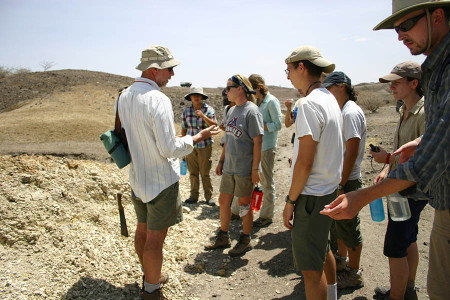
Dr. Feibel describes the Turkana region when Lake Lonyumun occupied the basin. Here, the 4.1 million year old lacustrine claystones lie unconformably next to and on top of ~ 24 million year old volcanic deposits in the Lothidok Range. The age of the lake beds is based on a nearby Moiti tuff (not shown but is approximately 3.97 million years old based on radiometric dating).

Paleogeographic reconstruction of Lonyumun Lake (A). Diagram B illustrates what the landscape most likely looked like during the deposition of the Moiti Tuff and filling of the basin. For reference, the modern Lake Turkana is outlined. Diagram from Feibel 2011. If you want to see more paleogeography maps of the Turkana Basin, check out Dr. Feibel’s and Patricia Schwindinger’s diagrams on National Geographic.
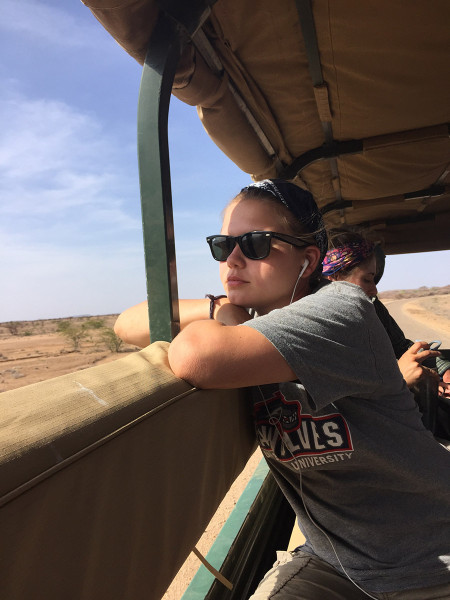
On the ride back to camp. Rachel daydreams and imagines what life was like for humans in the Turkana Basin during the Holocene lake highstands…
- Holocene lake deposits Part 2- Epim
On our next trip, we visited more lacustrine deposits from the Holocene. But first, here are a few pics before the trip of students learning how to measure the height of an outcrop.
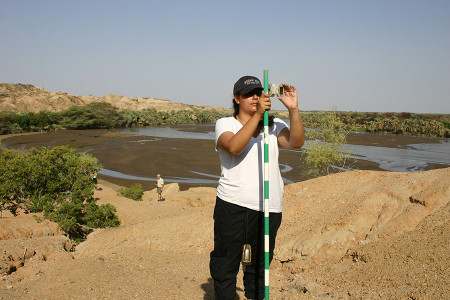
Aileen uses her brunton compass and a jacob staff to measure the height of the slope. She spots her next point at a height of 1.5 meters that she will position herself at next in order to measure up the slope. Like a carpenters level, she must make sure the brunton is leveled at a particular height.
- Future?
As mentioned previously, 90% of the water in Lake Turkana is due to the Omo River. However, the landscape of the basin will soon be changed due to forces by man. Three dams have been erected along the Omo River in Ethiopia and two more will be built. In addition, there are plans in effect for large-scale irrigation of sugarcane crops that will also decrease the amount of water into the Turkana region in northern Kenya. What will happen to the people, animals, and flora that live around the lake? Don’t they matter!? Not only will it affect the actual lake but this will also have effect on the groundwater. I will not go into this in much detail but if you are interested in learning more, please see Friends of Lake Turkana and read Sean Avery’s 2013 report titled “What Future for Lake Turkana?”

